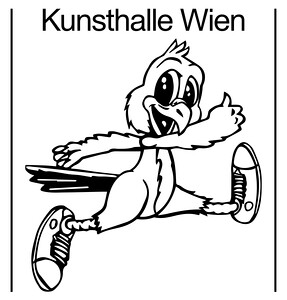October 30, 2019–January 26, 2020
Museumsquartier, Museumsplatz 1
1070 Vienna
Austria
Hours: Tuesday–Sunday 10am–6pm,
Thursday 10am–8pm
Enter the 1990s. Think raves, when sportswear hits high fashion and unisex styles became popular, when political activism grew in the wake of the global AIDS crisis, and the end of the Cold War signaled the reorganization of the world. Think of the reunification of Germany, think of how the mass-production and use of mobile phones came into being, as well as the prevalent spread of the Internet. Yet the nineties also appear to mark a point in history where the time horizon curves, and the future and the past seem set in some kind of loop. From then on, there is seemingly nothing culturally significant that hasn’t existed before, albeit in slightly different guises.
Now consider the 2010s. Think Spotify, Tinder, Grinder, virtual sex, OxyContin, Ritalin and anti-depressants as life antidotes for Millennials, economy as a form of political ideology, the recognition of non-human intelligence, uprisings in the social media era such as Occupy Wall Street and the Arab Spring. Think of sportswear as haute couture, appropriation without quotation, and clubs as the new churches. Living in the age of what Jean Baudrillard and Franco “Bifo” Berardi have called “semiocapitalism”, defined by the digitalization of communication, the prevalence of cognitive labor, the financialization of society and increasing social, economic, and political expectations that provoke a constant feeling of oppression, isolation, anxiety, and neurosis.
Time Is Thirsty is a journey through time and space in the form of an exhibition: a complex ensemble of contemporary artworks and artefacts from the early ’90s—more precisely from 1992, the founding year of the Kunsthalle Wien. It conveys, triggers, and challenges the experience of time, its dynamics and stagnation, shaped by the manipulation of the present and the past, memory and perception.
Time Is Thirsty presents an immersive time-space in which the boundaries between the decades become unstable: whether we are dealing with a relic from the ’90s, a present-day piece or phenomenon, what we encounter remains uncertain. Something that may perhaps be almost thirty years old can be sewn almost seamlessly with the fabric of today.
The exhibition operates on the edges of perception by presenting a number of works that float in unstable gender, human and post-human dimensions, where subjectivity is continually sliding. Many of the works evoke the deconstruction of the body as a unitary ontological entity, as a physical/mental space of conflicts and traumas. Macro (social/political) and micro (personal) narratives go hand to hand shaped by a porous relationship between the works and the outside world. Objects and quasi-objects that bear different degrees of visibility will function as ghost tracks, set to surprise, play, or come to life when one least expects.
Atmospheric and ephemeral elements also feature to further heighten the senses of the years around 1990 in the exhibition. The Norwegian artist and smell scientist Sissel Tolaas reconstructs the smell of Vienna in 1992 to be dispersed in the exhibition hall. The illumination of the exhibition changes over the day, following the light outside. The British musician and founder of the independent label Mego, Peter Rehberg, and the Italian electronic music duo Vipra, each compile playlists that will acoustically accompany the exhibition. The designer Fabio Quaranta picks out an assortment of characteristic clothing from the nineties and contemporary garments of today, worn by the visitor service team of Kunsthalle Wien.
The seminal exhibition Tattoo Collection will be partly reactivated within the context of Time Is Thirsty. The project evolved in 1991, initiated by Florence Bonnefous and Édouard Merino of Air de Paris together with Gilles Dusein of Urbi et Orbi. The exhibition first took place in the summer of 1992 at Galerie Jennifer Flay, in Paris, and subsequently showed at Daniel Buchholz in Cologne, and Andrea Rosen Gallery in New York. Hundreds of artists submitted drawings and ideas for tattoos towards the project, which were then unveiled in the gallery exhibitions with the possibility of acquiring the works and permanently realizing the tattoos, in some cases rendered according to specific terms outlined by the artists. Most remained as sketches and have still yet to be acquired and created. Ten of the original works will be realized in Time Is Thirsty, in homage to the 1992 exhibition. The tattoos will come to life by being permanently etched on, and worn, by the participating bodies. The pieces are of political and art-historical relevance in equal measure.
The exhibition will also feature the historical work Felix Gonzalez–Torres, “Untitled” (It’s Just a Matter of Time), 1992. The billboard was originally exhibited in 1992 in Hamburg in conjunction with the exhibition Gegendarstellung – Ethics and Aesthetics in Times of AIDS. It consists of a black background with white text in Gothic typeface inevitably linked to German history. The piece will be installed on several commercial billboard locations across the city of Vienna.
Time Is Thirsty offers an expansive installation of art, language, smell and sound, artefacts and everyday objects, in which the timelines of the past, the current moment, as well as the speculative future, seem to shift and merge into one another: a repertoire of gestures and emotions which may resonate physically and mentally as an MDMAdeleine to be swallowed. A kaleidoscope of signs between which one can lose oneself, and feel like a rubber duck lost at sea, washed ashore after 27 years.
Curator: Luca Lo Pinto
Artists: Xavier Aballí, Lutz Bacher, Nick Bastis, Cara Benedetto, Anna-Sophie Berger, Maurizio Cattelan, Claude Closky, DIE DAMEN, Jason Dodge, Robert Flack, Felix Gonzalez-Torres, Adam Gordon, i ready made appartengono a tutti ®, Ann Veronica Janssens, Pierre Joseph, On Kawara, La Blonde, Dorothea Lasky, Eva Marisaldi, Franco Mazzucchelli, Matthew McCaslin, Elisabeth Mercier, Eileen Myles, Fabio Quaranta, Peter Rehberg, Willem de Rooij, Georgia Sagri, Julia Scher, Heji Shin, Mladen Stilinović́, Sissel Tolaas, Gavin Turk, Vipra, Chris Wilder
Stay connected: Please check our website for regular updates on our program.
For further information please contact: presse [at] kunsthallewien.at



